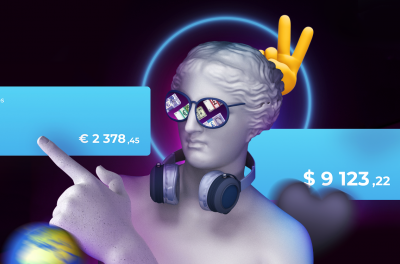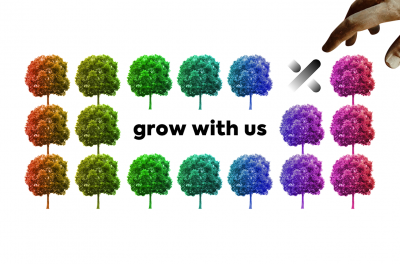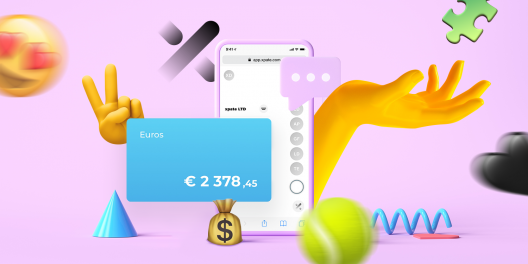xpate case study

The e-commerce market is one of the most rapidly developing and dynamic sectors of the global economy. Few countries have been left untouched by the digital revolution in commerce, especially in the wake of the viral pandemic that has seen a vast portion of the global retail market transfer its operations online.
The Netherlands is one of the most advanced countries in the EU with a population of over 17 million people and an annual GDP of around €760 billion. Such a national demographic and economic makeup along with the geographic location of the Netherlands make the country a prime region for the adoption of new technologies and a hub of e-commerce activities.
General e-commerce statistics
The year of 2019 saw a considerable increase in the activity of Dutch consumers online, according to Paymentwall (2019). The Statista report (2020) states that around €21.9 billion were spent by Dutch consumers on online shopping, making the Netherlands the fifth country across the EU in terms of the e-commerce market.
Such dynamics have allowed the Netherlands’ e-commerce market to grow by 9% in 2020 in comparison with the previous year. The online shopping market is expected to grow at a compound rate of 11% up until 2021 at such rates.
The high rates of internet and banking account penetration, which stand at 95.9% and 99.6% respectively, place the Netherlands well above average European rates of the given indicators.
The Statista report (2020) states that there are currently 8.87 million e-commerce users in the Netherlands, with an additional 440,000 users expected to be shopping online by 2022.
Fashion is the leading segment of the e-commerce industry in the Netherlands with a projected market volume of €5,264 million in 2020. User penetration will be 76.4% in 2020 and is expected to hit 83.2% by 2024 with the average revenue per user (ARPU) expected to amount to €1,198.92.
Mobile commerce
A report by JP Morgan (2019) indicates that the Netherlands is predicted to be one of the fastest-growing mobile commerce markets among all European countries in 2020. The projected compound annual growth rate is to remain 31% up to 2021, by which point mobile commerce is expected to be at the mark of €13.3 billion.
The rise of unlimited 4G bundles in the Netherlands has given smartphone users the ability to spend more time for online browsing, which has helped boost mobile conversion rates. The rise of mobile banking apps is also pushing mobile commerce growth along with the development of smartphone-only payment solutions.
Most popular e-commerce payment methods
JP Morgan (2019) also states that bank transfers are dominating the e-commerce sector in the Netherlands. Over 60% of all e-commerce transactions are made through bank accounts. The online ubiquity of the domestic brand iDEAL is one of the main drivers of such a state of affairs in the country.
The iDEAL online bank transfer payment system dominates in the country with an estimated 56% market share, choking competition. Online merchants report up to 90% higher conversion rates for Dutch customers when they add iDEAL as a payment option. By 2021, bank transfers are expected to account for 58% of the online payment market in the Netherlands, while digital wallets are predicted to grow to take 8%. Cards are likely to take up a 20% share of the market by the same period.
The online card payments sector is worth €3.6 billion in 2020 and the share is set to grow at a compound annual growth rate of 29.2% until 2021. The Statista report (2020) indicates that in addition, the value of digital wallet transactions is set to increase at a compound annual growth rate of 23.5% over the same period. PayPal was the most-used digital wallet by Dutch users over the same period, accounting for 6% of the overall additional payments market.
Use of cash in the Netherlands
The report by Central Banking (2020) indicates that cash has been in declining use over the years in the Netherlands due to the prevalence of online payments and the availability of internet connections. That and the convenience of digital wallets has led to the fact that the DNB (Dutch National Bank) (2020) released a report indicating that Dutch consumers used cash for 32% of their purchases in 2019, down from 37% in 2018.
Contactless debit card payments were at 43% above the share of cash. Total debit card payments reached 67% of purchases even as consumers were able to pay in cash at 97% of all retailers as at mid-2019. Cash is still the most widely accepted means of payment, though some retailers are stating that they will longer be able to accept cash in the future for cost and security reasons.
The hospitality and entertainment industries no longer generally accept cash. The statistics indicate 89% and 90%, respectively for the industries in terms of cash acceptance rates. In 2019, young adults were least likely to use cash and were the most avid users of electronic means of payment compared to other age groups. Consumers aged 19 to 34 made most debit card payments at PoS terminals and 19 to 24-year-olds made the most P2P payments by electronic means. Older people also made debit card payments far more frequently. The 55 to 74-year-old group is showing the largest increase in the given segment.
Conclusion
The Netherlands is one of the fastest growing e-commerce markets in the EU, set to grow well above European averages in the 2020–2021 period. The declining role of cash is ushering in new opportunities for the use of digital wallets and contactless payments, which are being supported by the younger generations of shoppers in the country. The increasing prevalence of payment processing services is also set to grow as PayPal and others are taking advantage of the cash limits being set for sellers, forcing the latter to transfer their operations and settlements online.
Follow us on Facebook, Twitter and LinkedIn to get more insights on what we do.






